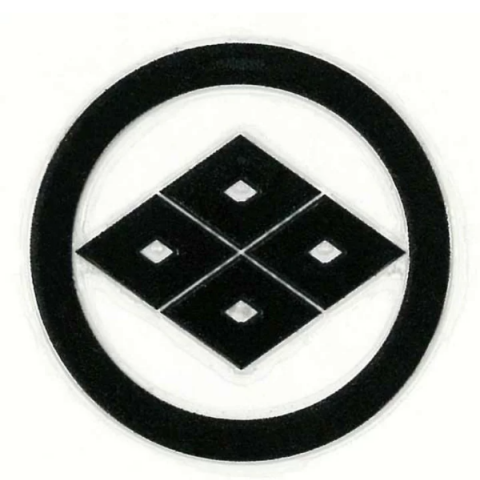Kenji Alexander Sasaki
age ~44
from West Linn, OR
- Also known as:
-
- Kenji A Sasaki
- Phone and address:
- 6114 W A St, West Linn, OR 97068
Kenji Sasaki Phones & Addresses
- 6114 W A St, West Linn, OR 97068
- Lake Oswego, OR
- Berkeley, CA
- Portland, OR
- Pasadena, CA
- 215 17Th St, Corvallis, OR 97330 • (541)7546951
- Eugene, OR
- 16510 Maple Cir, Lake Oswego, OR 97034 • (503)6357372
Work
-
Company:Intel (ibl)Apr 2013
-
Position:Research scientist
Education
-
School / High School:California Institute of Technology2010
-
Specialities:Ph.D. in Materials Science
Skills
Inorganic and Polymeric Device Fabrication • Analytical Chemistry • Electrochemistry • Machining • Hardware interfacing • Microfluidics • Design of Experiments and Project Planning • 3D modeling
License Records
Kenji Sasaki
License #:
CC-0006394 - Active
Category:
Accountancy
Type:
C.P.A. Certificate
Resumes

Director Of Process Development And Founder
view sourceLocation:
6114 west A St, West Linn, OR 97068
Industry:
Research
Work:
Elux Display
Director of Process Development and Founder
Sharp Labs of America Nov 2014 - Jan 2017
Senior Engineer and Researcher
Intel Corporation Apr 2013 - Jul 2014
Research Scientist
Lawrence Berkeley National Laboratory Mar 2012 - Apr 2013
Postdoctoral Researcher
Liox Power Jun 2009 - May 2011
Senior Scientist
Director of Process Development and Founder
Sharp Labs of America Nov 2014 - Jan 2017
Senior Engineer and Researcher
Intel Corporation Apr 2013 - Jul 2014
Research Scientist
Lawrence Berkeley National Laboratory Mar 2012 - Apr 2013
Postdoctoral Researcher
Liox Power Jun 2009 - May 2011
Senior Scientist
Education:
Caltech 2010
Caltech 2003 - 2009
Doctorates, Doctor of Philosophy, Materials Science, Philosophy Caltech 2004
Master of Science, Masters Oregon State University 2002
Bachelors, Bachelor of Science Oregon State University 1999 - 2002
Bachelors, Physics
Caltech 2003 - 2009
Doctorates, Doctor of Philosophy, Materials Science, Philosophy Caltech 2004
Master of Science, Masters Oregon State University 2002
Bachelors, Bachelor of Science Oregon State University 1999 - 2002
Bachelors, Physics
Skills:
Electrochemistry
Labview
Machining
Powder X Ray Diffraction
Instrumentation
Design of Experiments
Microfluidics
Polymer Chemistry
Solidworks
Autocad
Ftir
Technical Writing
Photolithography
Metallization
Research
R&D
Nanotechnology
Materials Science
Matlab
Labview
Machining
Powder X Ray Diffraction
Instrumentation
Design of Experiments
Microfluidics
Polymer Chemistry
Solidworks
Autocad
Ftir
Technical Writing
Photolithography
Metallization
Research
R&D
Nanotechnology
Materials Science
Matlab
Languages:
Japanese
English
English

Compliance Officer
view sourceWork:
Compliance Officer

Kenji Sasaki Tigard, OR
view sourceWork:
Intel (IBL)
Apr 2013 to 2000
Research Scientist Lawrence Berkeley National Laboratory
Berkeley, CA
Apr 2012 to Apr 2013
Postdoctoral Research Associate Arizona State University
Tempe, AZ
May 2011 to Mar 2012
SEMTE Adjunct Faculty Liox Power Inc
Jun 2009 to May 2011
Senior Scientist Caltech Materials Science Department
Sep 2003 to Sep 2009
Graduate Student Caltech Materials Science Department
Jun 2006 to Sep 2006
EAPSI Fellow Caltech Materials Science Department
Jan 2005 to Mar 2005
Teaching Assistant Jet Propulsion Laboratory
Sep 2002 to Sep 2003
Graduate Student
Apr 2013 to 2000
Research Scientist Lawrence Berkeley National Laboratory
Berkeley, CA
Apr 2012 to Apr 2013
Postdoctoral Research Associate Arizona State University
Tempe, AZ
May 2011 to Mar 2012
SEMTE Adjunct Faculty Liox Power Inc
Jun 2009 to May 2011
Senior Scientist Caltech Materials Science Department
Sep 2003 to Sep 2009
Graduate Student Caltech Materials Science Department
Jun 2006 to Sep 2006
EAPSI Fellow Caltech Materials Science Department
Jan 2005 to Mar 2005
Teaching Assistant Jet Propulsion Laboratory
Sep 2002 to Sep 2003
Graduate Student
Education:
California Institute of Technology
2010
Ph.D. in Materials Science California Institute of Technology
2004
M.S. in Materials Science Oregon State University
2002
B.S. in Physics
2010
Ph.D. in Materials Science California Institute of Technology
2004
M.S. in Materials Science Oregon State University
2002
B.S. in Physics
Skills:
Inorganic and Polymeric Device Fabrication, Analytical Chemistry, Electrochemistry, Machining, Hardware interfacing, Microfluidics, Design of Experiments and Project Planning, 3D modeling
Us Patents
-
Soluble Oxygen Evolving Catalysts For Rechargeable Metal-Air Batteries
view source -
US Patent:20120028137, Feb 2, 2012
-
Filed:Apr 25, 2011
-
Appl. No.:13/093759
-
Inventors:Gregory V. Chase - Pasadena CA, US
Strahinja Zecevic - Tustin CA, US
T. Walker Wesley - Los Angeles CA, US
Jasim Uddin - Pasadena CA, US
Kenji A. Sasaki - Pasadena CA, US
P. Giordani Vincent - Los Angeles CA, US
Vyacheslav Bryantsev - Pasadena CA, US
Mario Blanco - Temple City CA, US
Dan D. Addison - Pasadena CA, US -
International Classification:H01M 8/22
B01J 23/02
B01J 23/04
B01J 21/10
B01J 35/00
H01M 8/00 -
US Classification:429405, 502 1, 429535
-
Abstract:Rechargeable metal-air battery, air electrodes for use in the metal-air battery, and methods to manufacture the same are provided. The battery includes a negative electrode capable of taking and releasing active metal ions, a porous positive electrode using oxygen as an electroactive material and an electrolyte configured to conduct ions between the negative and positive electrodes and comprising one or more phases, wherein at least one phase comprises a liquid that at least partially fills the pores of the positive electrode and wherein the liquid comprises an oxygen evolving catalyst (OEC). The OEC a) is soluble in the liquid of the phase that partially fills the positive electrode pores, b) is electrochemically activated at a potential above the equilibrium cell voltage and c) is capable of evolving oxygen gas by oxidizing a metal oxide discharge product produced during discharge of the rechargeable metal-air battery.
-
Gas Diffusion Electrodes For Batteries Such As Metal-Air Batteries
view source -
US Patent:20130089795, Apr 11, 2013
-
Filed:Jul 23, 2010
-
Appl. No.:13/386872
-
Inventors:Gregory V. Chase - Pasadena CA, US
Dan D. Addison - Pasadena CA, US
Mario Blanco - Temple City CA, US
Kenji A. Sasaki - Pasadena CA, US
Jasim Uddin - Pasadena CA, US -
International Classification:H01M 12/08
H01M 4/04 -
US Classification:429405, 429403, 296231, 264105
-
Abstract:The present invention generally relates to batteries and, in particular, to electrodes for use in batteries such as non-aqueous metal-air batteries, for example, lithium-air batteries, as well as in other electrochemical devices. Such devices may exhibit improved performance characteristics (e.g. power, cycle life, capacity, etc.). One aspect of the present invention is generally directed to electrodes for use in such devices containing one or more pores or channels for transport of gas and/or electrolyte therein, e.g., forming an open porous network. In certain embodiments, the electrolyte may be a gel or a polymer. In some embodiments, there may be network of such channels or pores within the electrode such that no active site within the electrode is greater than about 50 micrometers distant from a gas channel. In some embodiments, such systems may be created using electrodes containing gel or electrolyte polymers, and/or by forming electrodes having different wettabilities such that certain regions preferentially attract the electrolyte compared to other regions, thereby causing self-organization of the electrolyte within the electrode. Other aspects of the invention are generally directed to methods of making such batteries or electrochemical devices, methods of using such batteries or electrochemical devices, kits involving such batteries or electrochemical devices, or the like.
-
Fluidic Assembly Enabled Mass Transfer For Microled Displays
view source -
US Patent:20210091052, Mar 25, 2021
-
Filed:Nov 23, 2020
-
Appl. No.:17/101016
-
Inventors:- Vancouver WA, US
Kenji Sasaki - West Linn OR, US
Kurt Ulmer - Vancouver WA, US -
International Classification:H01L 25/075
H01L 33/48
H01L 33/38 -
Abstract:A microLED mass transfer stamping system includes a stamp substrate with an array of trap sites, each configured with a columnar-shaped recess to temporarily secure a keel extended from a bottom surface of a microLED. In the case of surface mount microLEDs, the keel is electrically nonconductive. In the case of vertical microLEDs, the keel is an electrically conductive second electrode. The stamping system also includes a fluidic assembly carrier substrate with an array of wells having a pitch separating adjacent wells that matches the pitch separating the stamp substrate trap sites. A display substrate includes an array of microLED pads with the same pitch as the trap sites. The stamp substrate top surface is pressed against the display substrate, with each trap site interfacing a corresponding microLED site, and the microLEDs are transferred. Fluidic assembly stamp substrates are also presented for use with microLEDs having keels or axial leads.
-
Soluble Oxygen Evolving Catalysts For Rechargeable Metal-Air Batteries
view source -
US Patent:20200411933, Dec 31, 2020
-
Filed:Sep 11, 2020
-
Appl. No.:17/018965
-
Inventors:- Pasadena CA, US
Strahinja ZECEVIC - Tustin CA, US
Wesley T. WALKER - Los Angeles CA, US
Jasim UDDIN - Pasadena CA, US
Kenji A. SASAKI - Pasadena CA, US
Vincent P. GIORDANI - Los Angeles CA, US
Vyacheslav BRYANTSEV - Pasadena CA, US
Mario BLANCO - Temple City CA, US
Dan D. ADDISON - Pasadena CA, US -
International Classification:H01M 12/08
H01M 4/38
H01M 10/052
H01M 4/86
H01M 4/92
H01M 4/90 -
Abstract:Rechargeable metal-air battery, air electrodes for use in the metal-air battery, and methods to manufacture the same are provided. The battery includes a negative electrode capable of taking and releasing active metal ions, a porous positive electrode using oxygen as an electroactive material and an electrolyte configured to conduct ions between the negative and positive electrodes and comprising one or more phases, wherein at least one phase comprises a liquid that at least partially fills the pores of the positive electrode and wherein the liquid comprises an oxygen evolving catalyst (OEC). The OEC a) is soluble in the liquid of the phase that partially fills the positive electrode pores, b) is electrochemically activated at a potential above the equilibrium cell voltage and c) is capable of evolving oxygen gas by oxidizing a metal oxide discharge product produced during discharge of the rechargeable metal-air battery.
-
Fluidic Assembly Emissive Display Using Axial Light Emitting Diodes (Leds)
view source -
US Patent:20200251451, Aug 6, 2020
-
Filed:Apr 13, 2020
-
Appl. No.:16/846493
-
Inventors:- Vancouver WA, US
Kenji Sasaki - West Linn OR, US
Kurt Ulmer - Vancouver WA, US -
International Classification:H01L 25/075
H01L 33/38
H01L 33/48 -
Abstract:A fluidic assembly emissive display panel is presented with a plurality of wells exposing LED interfaces. Each LED interface is made up of a planar first interconnect platform having an x-axis first depth and is configured to accept an axial LED first electrode mounting wing. A planar second interconnect platform has the first depth and is configured to accept an axial LED second electrode mounting wing. A groove is interposed between the first and second interconnect platforms and has an x-axis second depth, greater than the first depth, and is configured to accept an axial LED body locking tooth. The axial LEDs have an inorganic LED body with two symmetrical locking teeth. First and second electrode mounting wings are electrically connected to corresponding LED interface first and second interconnect platforms, and aligned in a plane orthogonal to stacked LED body semiconductor layers.
-
Emissive Display Substrate For Surface Mount Micro-Led Fluidic Assembly
view source -
US Patent:20190319015, Oct 17, 2019
-
Filed:May 8, 2019
-
Appl. No.:16/406196
-
Inventors:- Vancouver WA, US
Changqing Zhan - Vancouver WA, US
Kenji Sasaki - West Linn OR, US
Kurt Ulmer - Vancouver WA, US -
International Classification:H01L 25/075
H01L 33/48
H01L 33/38 -
Abstract:Planar surface mount (SM) micro light emitting diodes (μLEDs) are presented. The fabrication method provides a MOCVD LED structure with a stack including a first doped semiconductor in a first plane, a MQW layer overlying the first doped semiconductor in a second plane, and a second doped semiconductor overlying the MQW layer in a third plane. An electrical insulator is conformally deposited over the etched stack in a fourth plane, and etched to expose the second doped semiconductor, creating a first via. Etching exposes the first doped semiconductor, creating a second via. A first electrode is connected to the second doped semiconductor through the first via, and has a substrate interface surface in a fifth plane with an average planarity tolerance of less than 10 nanometers. A second electrode is connected to the first doped semiconductor through the second via, and has a substrate interface surface in the fifth plane.
-
Planar Surface Mount Micro-Led For Fluidic Assembly
view source -
US Patent:20190319163, Oct 17, 2019
-
Filed:May 8, 2019
-
Appl. No.:16/406080
-
Inventors:- Vancouver WA, US
Changqing Zhan - Vancouver WA, US
Kenji Sasaki - West Linn OR, US
Kurt Ulmer - Vancouver WA, US -
International Classification:H01L 33/00
H01L 33/24
H01L 33/38 -
Abstract:Planar surface mount (SM) micro light emitting diodes (μLEDs) are presented. The fabrication method provides a MOCVD LED structure with a stack including a first doped semiconductor in a first plane, a MQW layer overlying the first doped semiconductor in a second plane, and a second doped semiconductor overlying the MQW layer in a third plane. An electrical insulator is conformally deposited over the etched stack in a fourth plane, and etched to expose the second doped semiconductor, creating a first via. Etching exposes the first doped semiconductor, creating a second via. A first electrode is connected to the second doped semiconductor through the first via, and has a substrate interface surface in a fifth plane with an average planarity tolerance of less than 10 nanometers. A second electrode is connected to the first doped semiconductor through the second via, and has a substrate interface surface in the fifth plane.
-
Diodes Offering Asymmetric Stability During Fluidic Assembly
view source -
US Patent:20190273006, Sep 5, 2019
-
Filed:May 22, 2019
-
Appl. No.:16/420097
-
Inventors:- Vancouver WA, US
David Robert Heine - Horseheads NY, US
Mark Albert Crowder - Portland OR, US
Sean Mathew Garner - Elmira NY, US
Changqing Zhan - Vancouver WA, US
Avinash Tukaram Shinde - Pune, IN
Kenji Alexander Sasaki - West Linn OR, US
Kurt Michael Ulmer - Vancouver WA, US -
International Classification:H01L 21/67
H01L 33/00
H01L 23/00
H01L 29/06
H01L 21/673 -
Abstract:Embodiments are related to systems and methods for fluidic assembly, and more particularly to systems and methods for assuring deposition of elements in relation to a substrate.
Myspace

Kenji Sasaki
view sourceFriends:
Shiori Matsubara, Mayumi Sato, Kenji Sasaki. Photo Log in to contact Kenji Sasaki.
Kenji Sasaki. Photo Log in to contact Kenji Sasaki.

Kenji Sasaki
view source
Kenji Sasaki
view source
(Kenji Sasaki)
view source
Kenji Sasaki
view source
(Kenji Sasaki)
view source
Kenji Sasaki
view source
Sergio Kenji Sasaki
view sourceYoutube
Googleplus

Kenji Sasaki
About:
気は優しくて力持ち♪
Bragging Rights:
早食い

Kenji Sasaki

Kenji Sasaki

Kenji Sasaki

Kenji Sasaki

Kenji Sasaki

Kenji Sasaki

Kenji Sasaki
Flickr
Get Report for Kenji Alexander Sasaki from West Linn, OR, age ~44









